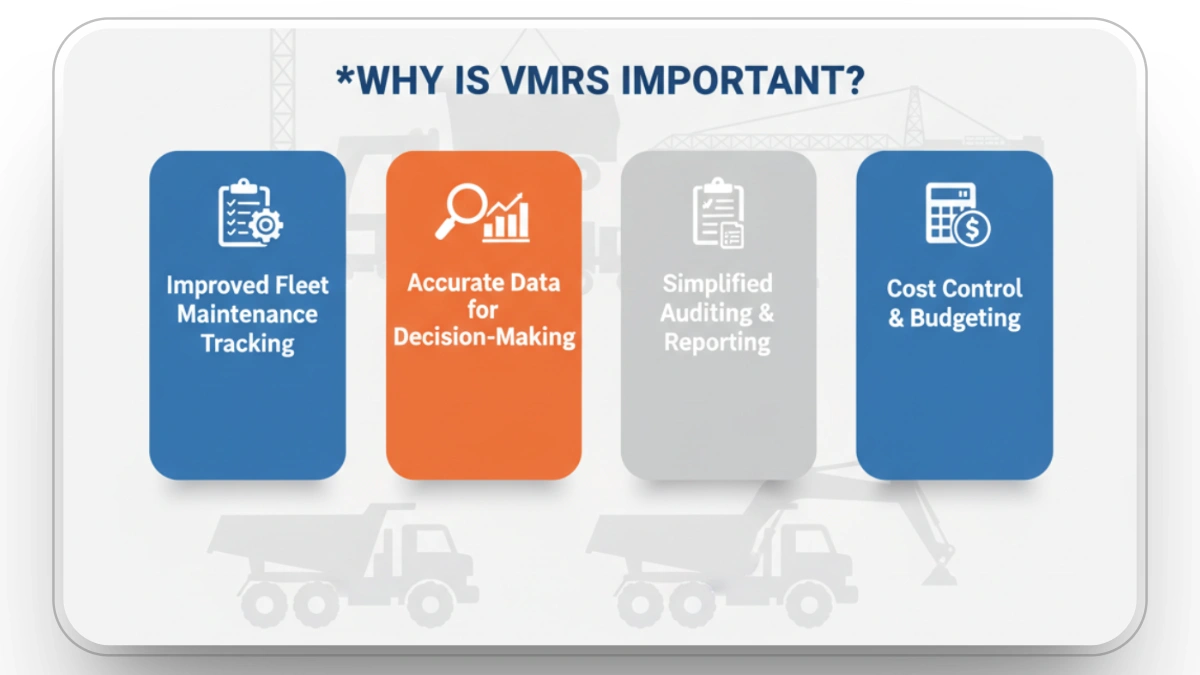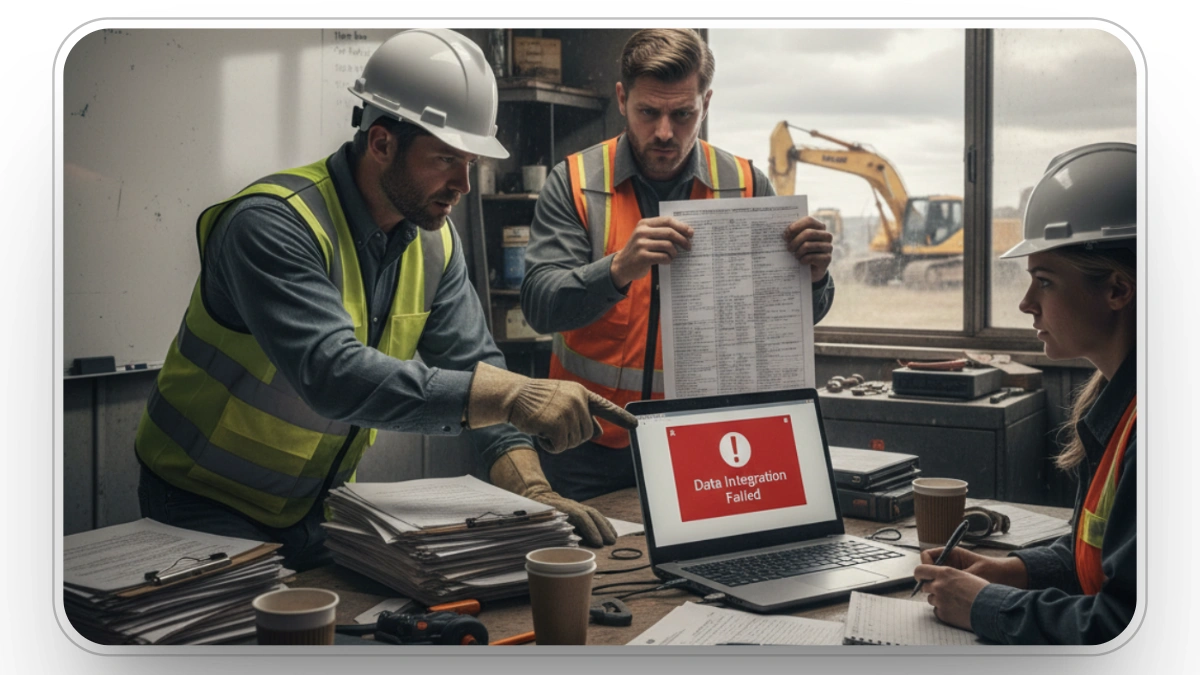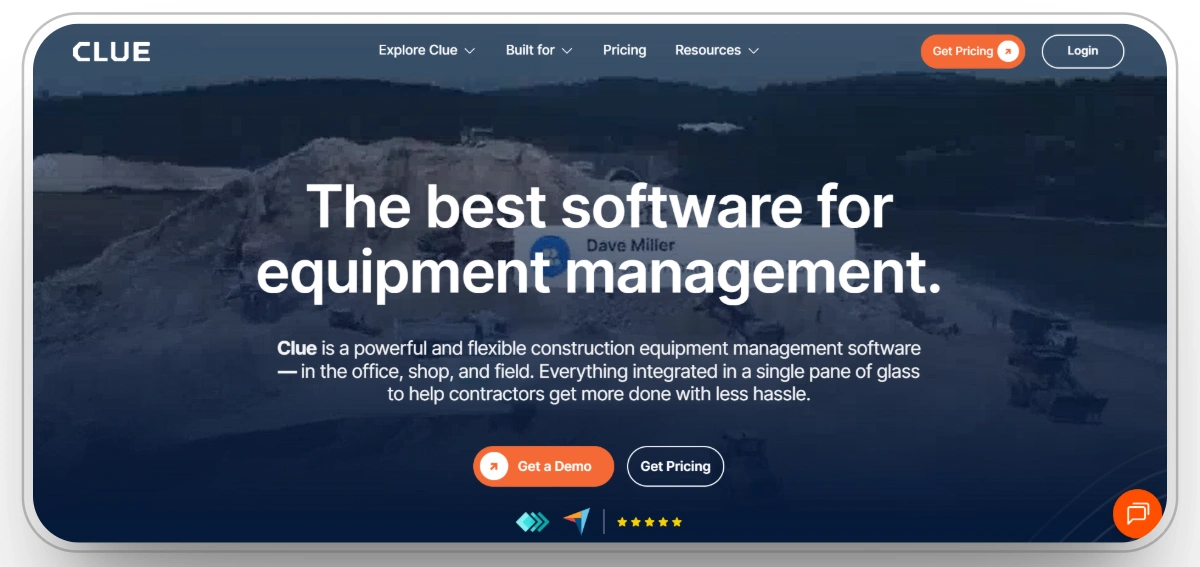Vehicle Maintenance Reporting Standards: A Complete Guide
One of the most important aspects of managing a fleet is having a solid system in place for monitoring and reporting vehicle maintenance. This is where Vehicle Maintenance Reporting Standards (VMRS) are needed.
Vehicle Maintenance Reporting Standards (VMRS) is a standardized code of practice that allows for fleet maintenance to be more systemized, efficient, and data-oriented.
We'll go into great detail about VMRS's definition, operation, and possible advantages for your fleet management company in this guide.
What is VMRS?

American Trucking Associations (ATA) developed the Vehicle Maintenance Reporting Standards (VMRS) in 1970 to standardize vehicle maintenance coding. It gives vendors, fleet managers, and service technicians a common language to effectively communicate and understand vehicle maintenance data.
VMRS codes are used across many industries for the purpose of ensuring that all maintenance and repair activities are recorded consistently. This makes tracking, analyzing, and reporting on the condition of fleet vehicles an easy responsibility.
The Structure of VMRS Codes
VMRS uses a 9-digit code structure that divides the information into three parts:
- System (First 3 Digits)
- Assembly (Middle 3 Digits)
- Component (Last 3 Digits)
All of these sections present valuable information concerning the vehicle, its mechanisms, and components.
- System: Represents the larger systems of the vehicle, such as the engine, brakes, or electrical systems.
- Assembly: Identifies the components of the system, e.g., alternator, braking pads, or exhaust system.
- Component: Assigns particular components or sub-components within the assembly, such as the starter motor or brake calipers.
Example of a VMRS Code:
031-001-053
- 031 refers to the Electrical System,
- 001 represents the Alternator Assembly,
- 053 is the specific Starter Motor Component.
VMRS enables one to accurately track and report on any maintenance and repair activity by disassembling the vehicle into systems, assemblies, and components.
Why is VMRS Important?

1. Improved Fleet Maintenance Tracking
VMRS enables the fleet managers to monitor the processes of maintenance and repair in a standard format. This assists in determining the trends, future maintenance requirements, and enhances the overall performance of the fleet.
- Standardized reporting can assist you in knowing the frequency of certain systems or components requirements.
- You find it less difficult to compare the data on various vehicles in the fleet, which can assist you in prioritizing the repair and preventing expensive failures.
2. Accurate Data for Decision-Making
With the standardized codes, the fleet managers can make data-based decisions in planning the fleet maintenance. You are able to examine the systems that are most likely to break down, repair expenses that are expensive, and make sound decisions regarding changing the vehicle or upgrading it.
As an example, when several vehicles are prone to alternator problems, you may choose to change the maintenance schedule of the fleet alternators.
3. Simplified Auditing and Reporting
VMRS codes make it easier to do audits and reporting, particularly to comply with government regulations. Maintenance history, warranty, and the service performed on each vehicle is easier to show.
Standardized codes can be used during the reporting of repairs and maintenance activities during fleet inspections or audits, since they will take less time to do this accurately.
4. Cost Control and Budgeting
VMRS assists the fleet managers in maintaining a keen eye on the cost of maintenance and repair. With tracking of data on various vehicles and systems, you are able to identify areas you are overspending on and re-adjust your budget.
As an example, when you realize that the number of brake system failures is on the rise, you can increase the budget on brake maintenance.
Who Uses VMRS?
VMRS isn’t just for trucking fleets; it’s become a standard language across the vehicle and equipment maintenance industry. Here’s who typically uses it:
- Fleet Operators: Trucking companies, construction fleets, transit agencies, and utility fleets use VMRS to standardize maintenance records and track costs.
- Maintenance Shops & Technicians: Independent and in-house shops rely on VMRS codes to document repairs consistently, from the system level down to the failed component.
- OEMs & Dealers: Manufacturers and dealerships use VMRS to align warranty claims, parts tracking, and service reporting with industry standards.
- Software Providers: Fleet management and maintenance software platforms integrate VMRS, so data entry and reporting are consistent across systems.
- Industry Regulators & Analysts: VMRS-coded data allows regulators, insurers, and industry researchers to analyze maintenance trends and reliability across fleets.
Key Components of VMRS
In order to know how VMRS codes are organized, it is worth decomposing each section of the code. Fleet managers can precisely track the repairs and maintenance as the system, assembly, and component codes make it easy.
1. System Codes (First 3 Digits)
The larger systems in the vehicle are symbolized by the system code. This may involve the engine, down to the brakes. The first part of the VMRS code is the system code that is required to understand the type of part of the vehicle that the repair is associated with.
Some common system codes include:
- 001 – Engine
- 031 – Electrical
- 050 – Brakes
- 120 – Transmission
The system codes assist in classifying the kind of problem, and it becomes simpler when fleet managers and service providers determine recurring problems with certain vehicle systems.
2. Assembly Codes (Middle 3 Digits)
The assembly code is the middle part of the VMRS code, which breaks down the system into sub-systems or components. Each system can have one or more assemblies that make up the full vehicle system.
For instance, within the engine system (Code 001), the assembly could be the fuel system (Code 045) or the cooling system (Code 061).
3. Component Codes (Last 3 Digits)
Component codes are the most detailed part of the VMRS code. These represent specific parts within an assembly, such as the alternator (Code 001) or fuel injectors (Code 020).
Component codes are critical for detailed tracking and accurate reporting. Fleet managers can use this information to pinpoint the exact part that requires attention.
Example Breakdown:
001-045-010
- 001 = Engine system
- 045 = Fuel system assembly
- 010 = Fuel injector component
In this example, you can immediately understand that the repair is related to a fuel injector in the fuel system of the engine.
Common VMRS Codes and Their Meanings
The most frequently used VMRS codes, and their definitions, are listed below:
1. Failure Codes
Failure codes give details on the nature of the problem or failure that took place on the car. These codes are normally applied to explain what occurred when a component or system broke down.
- 18 – Technician failure (e.g., part failure)
- 29 – Electrical issue
- 31 – Mechanical failure
- 45 – Wear and tear
These codes help fleet managers track the root causes of vehicle failures and identify recurring issues.
2. Work Accomplished Codes
Work accomplished codes describe the actions that the technician performed during the repair or maintenance. Some examples include:
- 15 – Replace part
- 16 – Adjust component
- 17 – Inspect component
- 18 – Repair system
These codes are essential for understanding what work has been completed on a vehicle and can be used to track the history of repairs.
3. Reason for Repair Codes
Reason for repair codes helps fleet managers understand why a vehicle came into the shop in the first place. This could be anything from a preventive maintenance (PM) issue to a breakdown. Some examples include:
- 01 – Scheduled PM
- 02 – Driver reported issue
- 03 – Breakdown
Quick Snapshot of Important VMRS Code Keys
Here’s a table of important VMRS code keys:
Detailed Example Work Order
To better illustrate how VMRS codes work in practice, let’s look at a real-world example of a work order:
Example Work Order
- Vehicle ID: #23345
- Repair Date: 2023-10-05
- Issue Reported: The vehicle is showing signs of poor performance and a possible issue with the alternator.
VMRS Code Breakdown
- System Code (031): Electrical
- Assembly Code (001): Alternator Assembly
- Component Code (053): Starter Motor Component
- Failure Code (29): Electrical Issue
- Reason for Repair Code (02): Driver Reported Issue
- Work Accomplished Code (15): Replace Part
Work Performed
- Replaced the bad starter motor in the alternator assembly under the electrical system.
- The problem was traced to a malfunction in the electrical system, probably the result of a wiring fault.
This work order applies the VMRS system to keep track of all parts of the repair from the system to the particular component and failure. It also offers clear information about the work done, which is necessary to ensure consistency as well as accuracy in keeping records.
Potential Challenges in VMRS Adoption

Although VMRS has considerable benefits, its application may also be associated with certain difficulties, especially in the early phases. These are the typical obstacles that fleets encounter when switching to VMRS:
1. Resistance to Change
Technicians and employees accustomed to less standardized ways of reporting can be resistant to the appearance of a new system. They can be new to the codes or find them as another burden.
Give intensive training and or proper instructions to facilitate the migration. Promote feedback and address questions about the new system from the technicians.
2. Integration Issues
Older software or manual-based fleets can probably struggle to incorporate VMRS with the already integrated fleet management systems. This may result in either data entry errors or discrepancies in reporting.
Make sure that your fleet management software or CMMS is able to accept VMRS codes. Otherwise, look at the option of upgrading or third-party tools that can easily incorporate VMRS.
3. Training Requirements
The implementation of VMRS needs to be properly trained to the staff through the fleet, technicians, managers, and anybody who is engaged in maintenance reporting and surveillance. This takes time and resources to make sure that there is common ground.
Establish continuous training courses so that employees can become familiar with VMRS. Support learning through practical hands-on examples.
4. Ongoing Monitoring
Regular checking of data entry and using and ensuring that the codes are being used uniformly throughout the fleet are the main ways to ascertain that VMRS is being used properly. This can lead to further audits and changes as time goes by.
Carry out periodic audits and give feedback to technicians. Promote life-long learning in order to enhance compliance with VMRS standards.
Best Practices for Implementing VMRS in Your Fleet
These measures will assist your team in properly using VMRS codes, update your system, and have the correct records that will enable better fleet management.
1. Standardize Code Usage Across Your Team
Ensure that VMRS codes are used by all members of your team. This is to train your maintenance personnel and make them realize that it is important to use appropriate codes to make certain repairs.
2. Use a CMMS That Supports VMRS
In order to best utilize VMRS, a Computerized Maintenance Management System (CMMS) can be used that is capable of supporting VMRS codes. It will enable a smooth integration of VMRS data into your fleet management processes and will enable the automation of maintenance activity tracking and reporting.
3. Regularly Review and Update Codes
New codes will be introduced into the VMRS system as the vehicle technologies change. Periodically test and revise your coding system to make sure that it is up-to-date on the current standards and enables new technologies in vehicles, like electric vehicles (EVs).
4. Audit Your Data
VMRS can prevent mistakes; however, it remains necessary to audit your information on a regular basis. Make sure that the codes in the maintenance records are correct, and they represent the real work done.
Integrating Clue with VMRS

Clue is an AI-powered platform that controls heavy construction machinery to ensure real-time visibility into fleet usage, maintenance, work orders, cost, and more. With VMRS codes built into the platform of Clue, the process of categorizing maintenance tasks can be automated so that the process of reporting becomes consistent and accurate.
The major advantages of this integration are:
- Automated Code Assignment: Clue will automatically assign maintenance tasks the appropriate VMRS code based on diagnostic data and fault code to eliminate the need to enter data manually and save time.
- Centralized Data Management: Under a centralized system, all maintenance activities and respective VMRS codes are stored and can easily be accessed and analyzed.
- Enhanced Reporting and Analysis: The standardized VMRS codes will ensure that the fleet managers can create detailed reports to assist in identifying trends, optimizing maintenance schedules, and cost management.
Leveraging the capabilities of Clue, in combination with VMRS, fleets will be able to reach a new level of operational efficiency and data accuracy in their maintenance operations.
Conclusion
VMRS is an effective solution for fleet managers who want to optimize the maintenance of their vehicles. VMRS allows improved decision-making, cost management, and operational efficiency by standardizing the method of tracking and reporting of vehicle systems, assemblies, and components.
Whether it is routine maintenance or emergency fixes, adopting VMRS means you have the information you require to keep your fleet on the road and your maintenance costs within reach.
FAQs
1. What is the purpose of VMRS in fleet management?
To simplify the monitoring and reporting of vehicle maintenance, a standard coding system named VMRS was developed to enable vendors, technicians and fleet managers to record it. The maintenance information interpretation and communication may lead to better decision-making, cost control, and operating efficiency.
2. How can I implement VMRS in my fleet?
To make a successful VMRS implementation, you should use a Computerized Maintenance Management System (CMMS) that supports VMRS, and the codes should be used uniformly by your team, as well as reviewed and updated regularly to reflect new technologies in vehicles and audited to make sure your data is accurate.
3. How often should VMRS codes be updated?
It is important to periodically review and update VMRS codes, especially when vehicle technologies evolve. To take into consideration recent advancements, like the growing popularity of electric vehicles (EVs), new codes are introduced. Maintaining the effectiveness and currentness of your fleet management system requires regular reviews.
Transform Your Equipment Management











